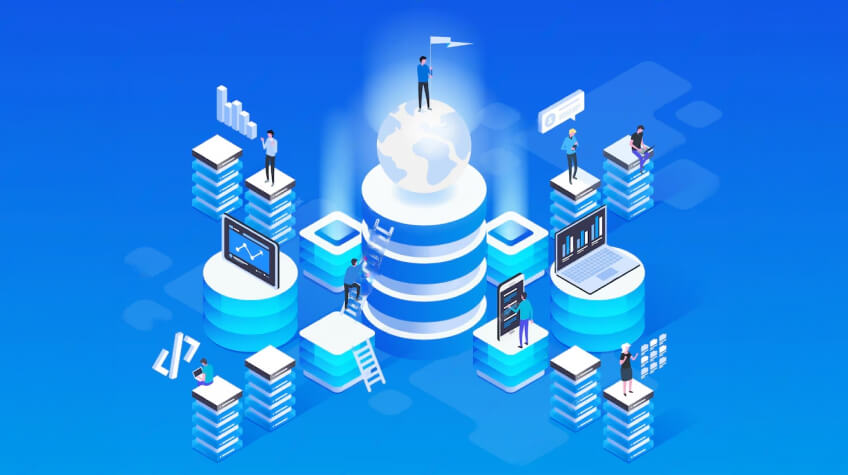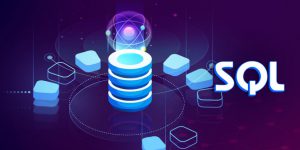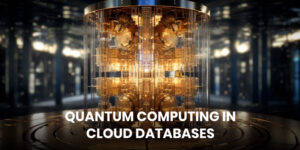
Choosing the right database for IoT (Internet of Things) is very challenging. First of all, you need to understand the data needs of your IoT solutions. This helps to discover which type of database can boost the growth of your organization. Then, there are several other factors to consider, such as software services, different features of databases, and their overall costs. These factors impact your choice of the right database (s).
If you want to know how to choose the right database for IoT solutions based on different factors, this article is for you. Here, you will get step-by-step guidance on how to choose the suitable database for enhancing the speed and efficiency of IoT. So, read on the article till the end and gain incredible insights. Let’s get started…
➥ Understanding the Data Needs for IoT
IoT solutions connect and process data from the sensors and actuators installed in the interconnected devices. They make real-time decisions to control sensors and actuators based on their intelligent data analysis. In case they find any unusual activity, they send notifications and alerts to protect the enterprise from potential threat.
So, before you come to any conclusion regarding the right database, you should understand the data requirements. You need to have answers for the following questions to understand your data needs:
- Edge servers are accountable for which type of data processing and decision-making?
- Have you installed cloud solutions in one place or are they installed in various places across the enterprise?
- How much data do the edge servers collect and process from the interconnected devices?
- Do the IoT solutions send real-time commands or alerts to control the sensors and actuators?
- How does the historical data view aid in getting business insights?
➥ Divide the IoT Solution into Software Services
IoT solutions perform various kinds of software services. When you choose the database for your enterprise, you should break down the entire IoT architecture into services and analyze which types of responsibilities they carry out. This insight helps you in choosing the right database to maximize the efficiency of your IoT solutions. Look at the following table to understand various software services, their responsibilities, and database requirements:
| Software Services | Responsibilities | Database Requirements |
|---|---|---|
| Data Ingest | Collect and store messages and log information from the interconnected devices. | Need high-performing operations to save data from the loss. |
| Edge Analytics | Analysis of data to make real-time decisions at the edge level. | Require high-performing database to solve and analyze complex computations of data. |
| Device Manager | Send alerts and notifications to the interconnected devices. | The database should have minimum to zero latency. |
| System-wide Analytics | Gather data from one or multiple edge servers and perform data filtering, transformation, and analytics. | Can do complex data computations and store data for a long-term purpose. |
| C & C Dashboard | Visual presentation of the current IoT architecture. | No error should be in the data; analysis of data should be performed with low to zero latency. |
| Business Intelligence | Analysis of the historical data to figure out the gaps. | Can store data for a long time. |
| IoT Data Stream Outlet | Transform data into a simple and common format for subscribing customers. | Can do data transformation efficiently and the database should be supportive of publishing and subscribing. |
➥ Categorize Your Services Based on Data Needs and Choose the Right Database
Based on similar data characteristics, you should divide data into different categories. The objective of this categorization is to limit databases and reduce their operational cost. This discards unnecessary databases that do not fit your requirements. In this way, you get two types of databases i.e. hot database and cold database. Let’s understand about them in detail:
1. Hot Database or SQL Database
A Hot Database, popularly known as SQL database, is one that is held in the SQL Server Buffer Pool, main RAM. You can store this database in the SQL Server Buffer Pool or RAM. This is because they ensure low latency. You can quickly access your data. Implementing effective MySQL performance optimization strategies becomes essential when working with hot databases to preserve their low-latency advantage. Any data that is very crucial for your business, you can retrieve from there in only a couple of seconds. Many cloud service platforms like Google, Azure, and Amazon offer this type of database at hefty amounts. Let’s look at the following features of the hot database to understand it in a better way:
- Compatible with many devices and transforms data into various data formats
- Enables you to run many customers’ queries in real-time
- Use a high-performing yet cost-effective memory model
- Aid you in saving binary data
- Lets you access the benefit of high availability and disaster recovery of data
- Allows you to avail the benefit of lower latency and higher transactional rates than traditional hard drives
- Allows you to share the database with clients without any geographical restrictions
- Efficient for various tasks such as data transformation, analysis, messaging, and telemetry data.
Let’s now understand what Cold Database is and how is it different from Hot Database. Here we go…
2. Cold Database
In contrast to the hot database, the cold database is the one that businesses need to access only occasionally, thus the name. This database primarily includes information a business is required to keep for regulatory compliance, video, and photographs. In addition, it also includes the data that is saved for backup, archival, big-data analytics or disaster recovery purposes. All in all, you can include historical data that remains in the dormant stage for extended periods such as months, years, and decades. For this, you can opt for services like Google Coldline and Amazon Glacier. The point worth noting is that their retrieval and response times are lower than those of the hot database.
Linear Tape Open is one of the most popular tools for cold databases. This is one of the slowest and coldest methods of storing data. It is affordable as well as a durable medium for storing data.
However, this is true that a cold database boasts lower overall costs than a hot database. But, its pre-operation expenses can be higher than a hot database. This is because it needs thoughtful planning and strategy to select data for cold storage. Once you store data there, you can only access it at a sluggish rate.
Apart from this, the term for cold database has evolved in recent years. Now, businesses use it as an offline data storage platform as they consider it the most suitable to keep offline information as it stays out of cloud storage and network.
3. NoSQL Database
NoSQL database, short for “Not Only SQL,” is yet another preferred choice among IT professionals for IoT solutions. These databases are designed to handle and store a wide variety of data models that do not require a fixed schema, unlike traditional relational databases. NoSQL databases are optimized for handling large volumes of unstructured, semi-structured, and structured data, which makes them ideal for big data applications and real-time web and mobile applications. In addition, these databases offer high scalability, flexibility, and performance by allowing for horizontal scaling across many servers.
These databases come in numerous different types, including document databases, key-value stores, column-family stores, and graph databases, helping users to choose the ones that fit their requirements the best. The flexibility and performance of NoSQL databases have made them a popular choice for modern applications that require handling diverse data types and large-scale data processing. You can easily recognize this database for its high performance, functionality, and ease of development.
Take a look at the following features of the NoSQL database to understand why you should choose this:
- In comparison to other database sets, this offers more flexible schemas. This flexibility ensures faster access to the stored data. If you want to store semi-structured and unstructured data, your preferred choice should be the NoSQL database
- This does not include expensive servers to scale up. Instead, it employs affordable distributed clusters of hardware to scale out
- NoSQL datasets are for specific datasets and design patterns. They are high-performing database
- They usually offer high-level APIs.
➥ Evaluation of Costs
Now that you have learned about different databases, you can opt for based on specific characteristics. Let’s understand the parameters that determine the cost of the database for IoT:
- License Type: Every database comes with a different license. The type of license that you have chosen for the database affects the overall cost of the database
- Resource Efficiency: Resource efficiency is yet another significant factor that determines database cost. Suppose you have chosen a lightweight and thread-safe database; you may require only two servers for reading and writing datasets. On the contrary, if you have chosen a traditional database, you may require more servers for data transformation and analysis. You will have to analyze your needs prior to selecting the database and determining the cost of it.
- Automated Operation: You can opt for automated operation to enhance efficiency in IoT solutions. However, this adds to the cost of the database solution that you opt for. However, having automated operation ensures automated backup and recovery, data partitioning, notifications, and alerts
- Data Insurance: You can choose data insurance with a database. This is extremely important for commercial IoT solutions.
Bottom Lines
So, this is all about choosing the right database for IoT. You can choose the one that is easily accessible, scalable, and a high performer based on the information we have given you. Choosing the right database for IoT involves careful evaluation of the specific requirements of your IoT applications. This includes data volume, velocity, and variety, in addition to the need for real-time processing. Make sure to opt for the one that offers high scalability, efficient data ingestion, and robust analytics capabilities to handle the vast amounts of diverse data generated by IoT devices.
Additionally, look for databases that seamlessly integrate with your existing infrastructure and provide strong security features to protect sensitive data. By carefully considering the specific requirements of your IoT ecosystem, you can guarantee top-notch performance, scalability, and reliability, ultimately boosting the overall effectiveness of your IoT solutions.
Thanks for reading! Hopefully, this article has been informative for you!!






